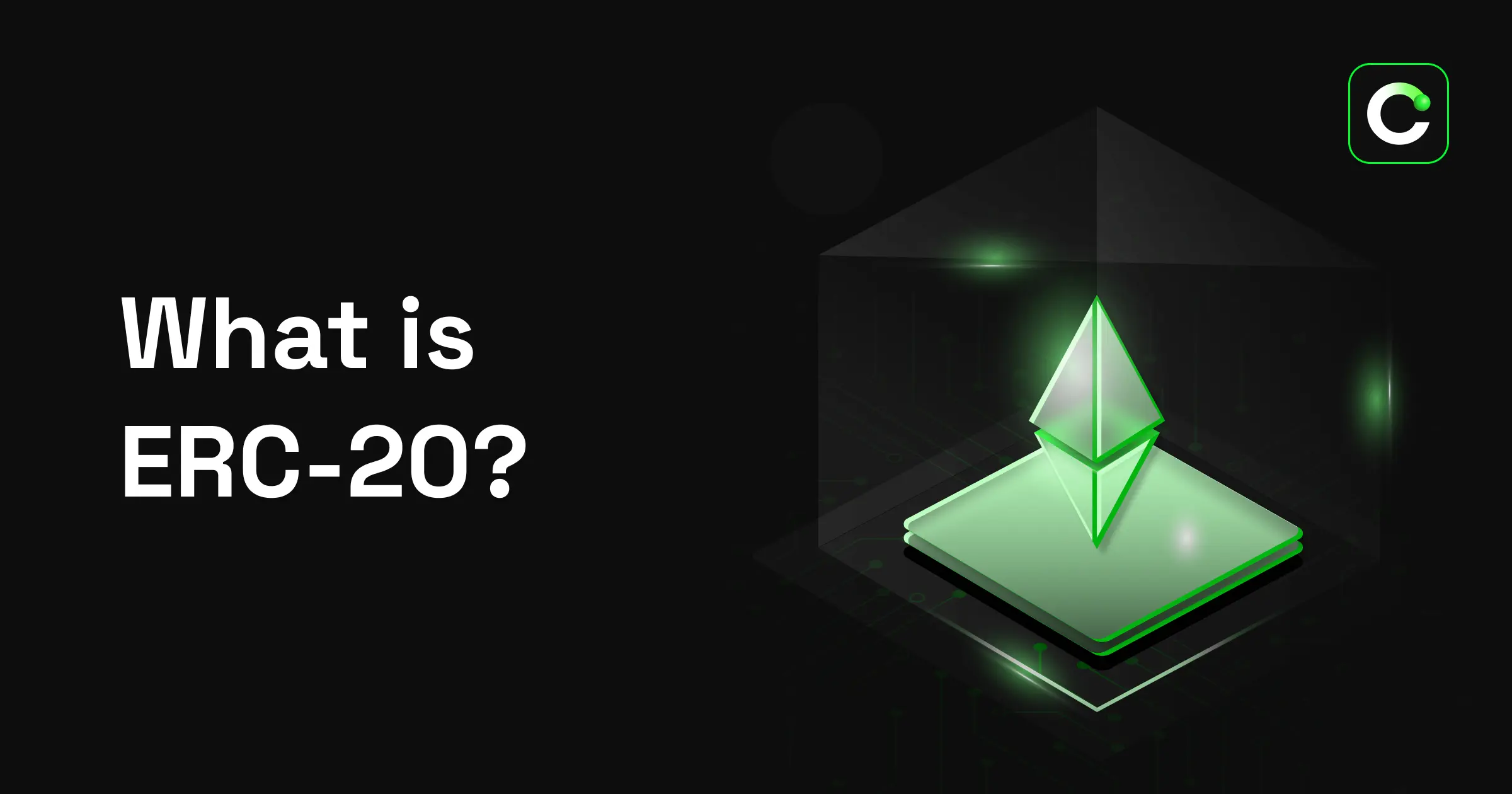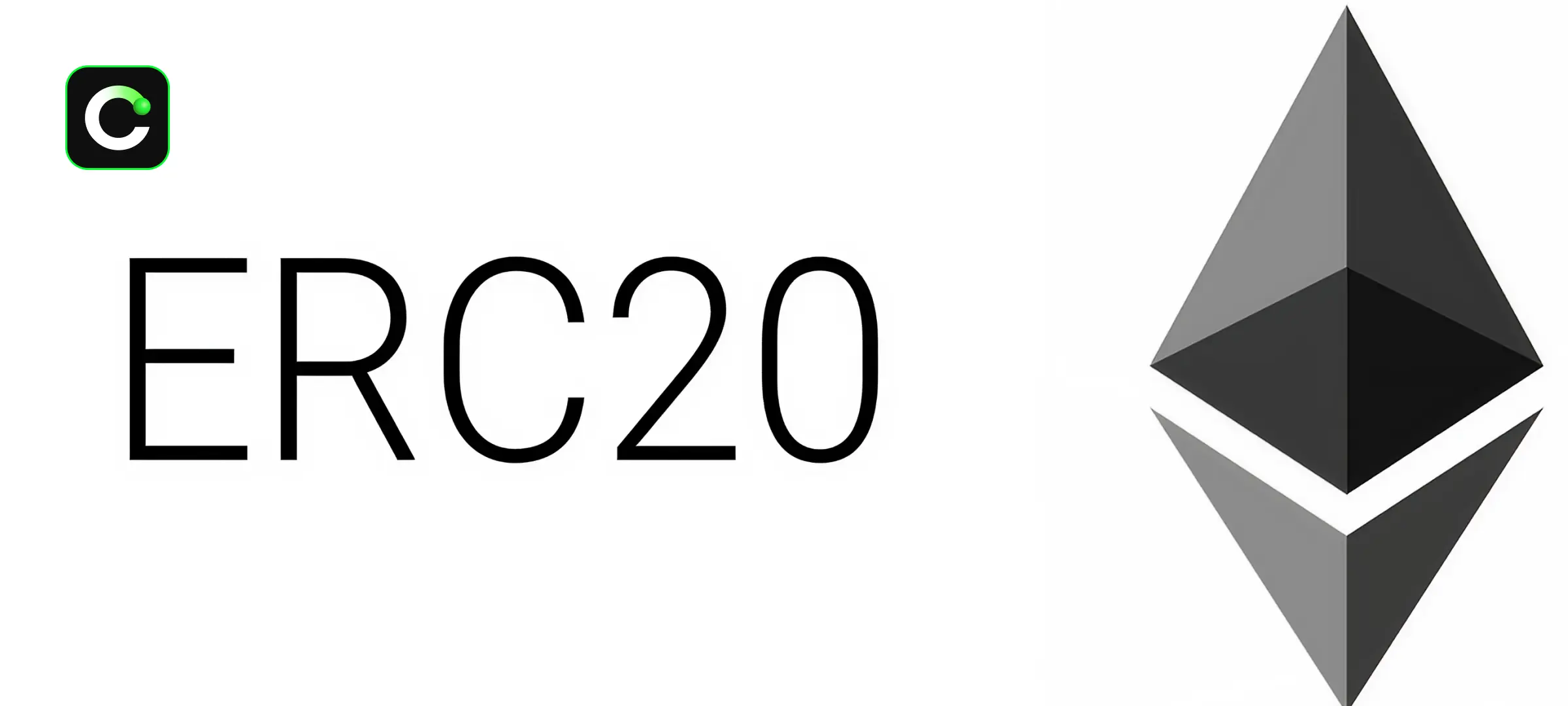What is ERC-20?

Cryptocurrency Exchange

ERC-20 is the most common token standard used on the
Ethereum network. In short, ERC-20 ensures that tokens developed within the Ethereum ecosystem follow the same set of rules. This standard allows different projects to create their tokens in a compatible way, transfer them easily, and store them securely in wallets.
Today, many assets in the crypto world, from DeFi projects to stablecoins, are developed using ERC-20 standards. As the Ethereum token standard, ERC-20 provides a common language for both developers and users, making it one of the most preferred frameworks in the crypto ecosystem.
What are the Features of ERC-20?
The most important feature of ERC-20 tokens is that they are built on
standardized rules defined within the Ethereum network. These rules cover functions such as token transfers, balance display, and approvals. Once a user adds an ERC-20 token to their wallet, they can transfer or store it without any additional steps.
The compatibility provided by ERC-20 allows tokens to work seamlessly with
decentralized applications (dApps), smart contracts, and crypto exchanges. In addition, all transactions are recorded on the Ethereum blockchain, making them auditable, immutable, and reliable. These features have made ERC-20 one of the most trusted and widely used token standards in the crypto ecosystem.
How Did ERC-20 Emerge?
The ERC-20 standard was first proposed in 2015 by the Ethereum developer community. There was a need for a common framework to avoid incompatibility when different projects launched their own tokens. This process was initiated through the “
Ethereum Request for Comment” (
ERC) and was quickly adopted.
During the ICO boom of 2017, hundreds of projects launched their tokens using the ERC-20 standard. This made ERC-20 a turning point in the crypto ecosystem and established it as one of the most well-known standards on the Ethereum network.
How Does ERC-20 Work?

ERC-20 tokens operate through
smart contracts defined on the Ethereum network. Each token has its own contract, which specifies total supply, transfer conditions, and ownership details. When a user wants to transfer an ERC-20 token, the transaction is recorded on the Ethereum blockchain and becomes permanent after verification.
The system automatically checks who owns the tokens, how much is being transferred, and to which address. Functions such as balance display, approvals, and spending authorizations (allowance) also operate under this standard. This allows tokens from different projects to be used seamlessly across wallets and exchanges.
ERC-20 Tokens
Today, a large portion of the most well-known assets in the crypto world have been created using the ERC-20 token standard. This structure offers developers the ability to create new tokens quickly and securely.
Thanks to the standardization brought by ERC-20, different projects can work together seamlessly; users can securely store various tokens in the same wallet. With its wide range of applications, ERC-20 has become a fundamental structure for both established projects and newly developed ventures.
What is an ERC-20 Address?
An ERC-20 address is a wallet address used on the Ethereum network, usually starting with “0x” and consisting of 42 characters. This address is required for users to safely store, send, and receive ERC-20 tokens. Each address is unique, recorded on the
Ethereum blockchain, and belongs solely to the individual. Since transactions sent to the wrong address cannot be reversed, careful usage is critical.
How to Find an ERC-20 Address?
To view your ERC-20 address, you need an Ethereum wallet or an exchange account. In most wallet applications, the address can be found under the “wallet” or “deposit/withdrawal” section. ERC-20 addresses always begin with “0x” and are often shared by copying or via QR codes. Extra caution is advised when sharing your address, as mistakes can compromise security.
See also:
How to Create a Crypto Wallet?
Conclusion
ERC-20 is a standard that enables tokens built on the Ethereum network to operate in a compatible, secure, and transparent way. Many widely used assets in the crypto world, from stablecoins to DeFi projects, are created with this framework.
As the crypto exchange with the
highest USDT liquidity in Türkiye, CoinTR provides users with a strong and reliable trading infrastructure. Bitcoin & crypto exchange
CoinTR stands out with easy-to-use features, fast transactions, and high security standards for both beginners and experienced traders.
With CoinTR, crypto is just that easy! 🚀
Legal Notice
The information, comments, and evaluations contained in this content do not constitute investment advice. This content is not intended to be prescriptive in any way and is intended to provide general information. It does not constitute investment advice. CoinTR cannot be held responsible for any transactions made based on this information or any losses that may arise.
Recommended
- Cryptocurrency ExchangeWhat is a Stablecoin? 2025 Stablecoin List The cryptocurrency market is known for its high volatility, posing significant risks for investors. Stablecoins provide a secure alternative by maintaining a stable value. Typically pegged to fiat currencies, precious metals, or other assets, stablecoins serve as a safe haven for investors and traders. But what is a stablecoin, how does it work, and what types exist? Let’s dive into the details. What is a Stablecoin? A stablecoin is a type of cryptocurrency designed to maintain a stable value,
2024-11-24
- Cryptocurrency ExchangeWhat are Bear and Bull Markets? In financial markets, the terms bear market and bull market are often used to describe overall trends. A bear market represents periods of declining prices, while a bull market refers to rising trends. These terms are particularly important in the cryptocurrency market. But what exactly is a bear market, what is a bull market, and how long do these periods last? Here’s a detailed guide. What is a Bear Market? A bear market is a period when asset prices experience a prolonged decline, typically
2024-11-24
- Cryptocurrency ExchangeWhat is Blockchain Technology? Blockchain is a digital ledger technology where data is stored on a distributed network without the need for central authority. As the backbone of cryptocurrencies such as Bitcoin, blockchain is now being used not only in the financial world but also across many different industries. Blocks record transactions, and each block is linked to the previous one, forming a chain. This structure makes data immutable, tamper-proof, and transparent. Key Features: Decentralization: Not controlled by a s
2024-11-28


